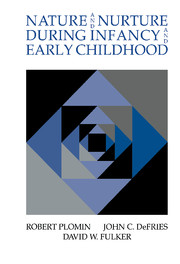Book contents
- Frontmatter
- Contents
- Preface
- Acknowledgments
- 1 Introduction
- 2 Individual differences and group differences
- 3 Quantitative genetics as the basis for a general theory of individual differences
- 4 The Colorado Adoption Project
- 5 Transitions and changes: description and prediction
- 6 Transitions and changes: genetic and environmental etiologies
- 7 Introduction to model fitting
- 8 Fitting sibling and parent–offspring models in the Colorado Adoption Project
- 9 Interactions
- 10 Genotype–environment correlation
- 11 Genetics and measures of the family environment: the nature of nurture
- 12 Conclusions
- References
- Author index
- Subject index
7 - Introduction to model fitting
Published online by Cambridge University Press: 15 October 2009
- Frontmatter
- Contents
- Preface
- Acknowledgments
- 1 Introduction
- 2 Individual differences and group differences
- 3 Quantitative genetics as the basis for a general theory of individual differences
- 4 The Colorado Adoption Project
- 5 Transitions and changes: description and prediction
- 6 Transitions and changes: genetic and environmental etiologies
- 7 Introduction to model fitting
- 8 Fitting sibling and parent–offspring models in the Colorado Adoption Project
- 9 Interactions
- 10 Genotype–environment correlation
- 11 Genetics and measures of the family environment: the nature of nurture
- 12 Conclusions
- References
- Author index
- Subject index
Summary
The full adoption design allows us to investigate the etiology of individual differences in behavior in a direct and straightforward manner. The design is both simple and powerful, and the summary statistics it yields provide a broad description of this etiology, as we have seen in the preceding chapter. The correlation between the behavior of the adopted child and that of its adoptive parents provides direct evidence of the importance of shared environment independent of inherited, or genetic, influences. The correlation between the behavior of the adopted child and that of the biological parents from whom the child has been separated since birth provides direct evidence of the importance of genetic influences independent of the home environment. In nonadoptive families these two influences are always confounded and there is no direct way to evaluate their relative importance.
Simple correlations estimated from adoption data provide a very broad description that, for many purposes, may be quite sufficient for an understanding of the etiology of individual differences. Alternatively, a model of transmission may be assumed that facilitates estimates of genetic and environmental transmission parameters. The adoptive-parent/adopted-child correlation provides an estimate of the proportion of variance due to shared environmental influences (c2), whereas the biological-parent/adopted-child correlation estimates one-half of heritability (h2).
- Type
- Chapter
- Information
- Nature and Nurture during Infancy and Early Childhood , pp. 157 - 178Publisher: Cambridge University PressPrint publication year: 1988



